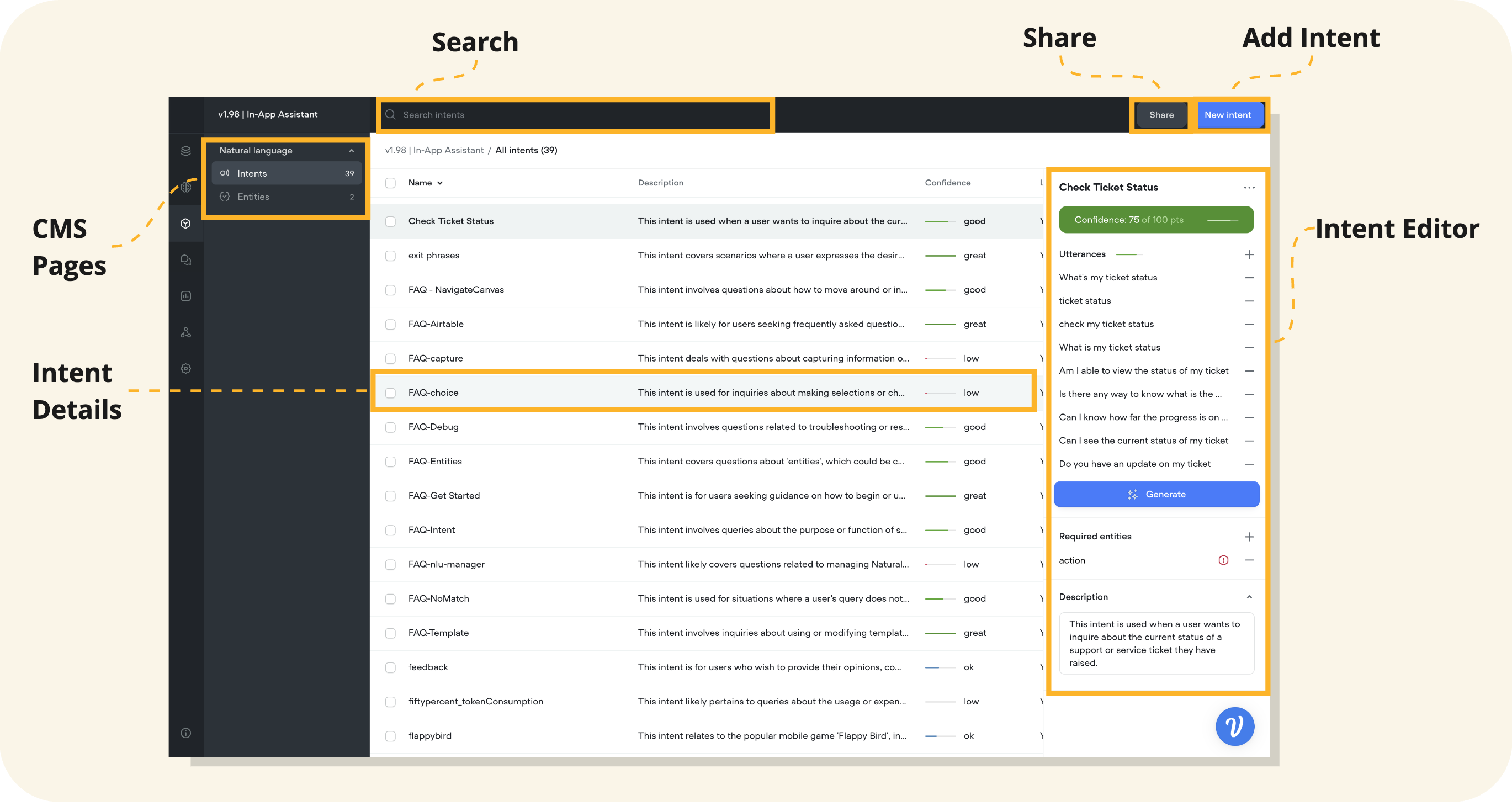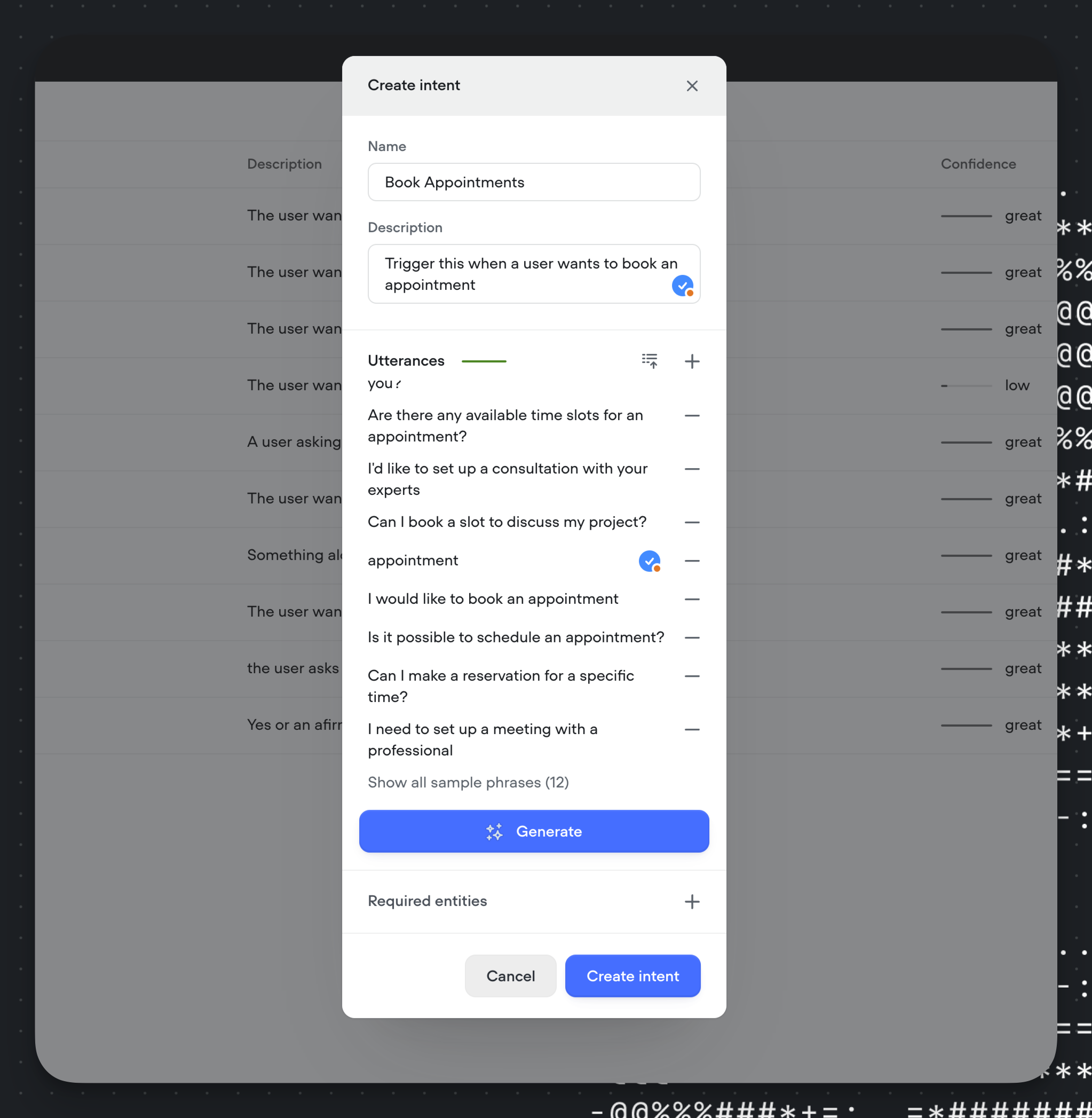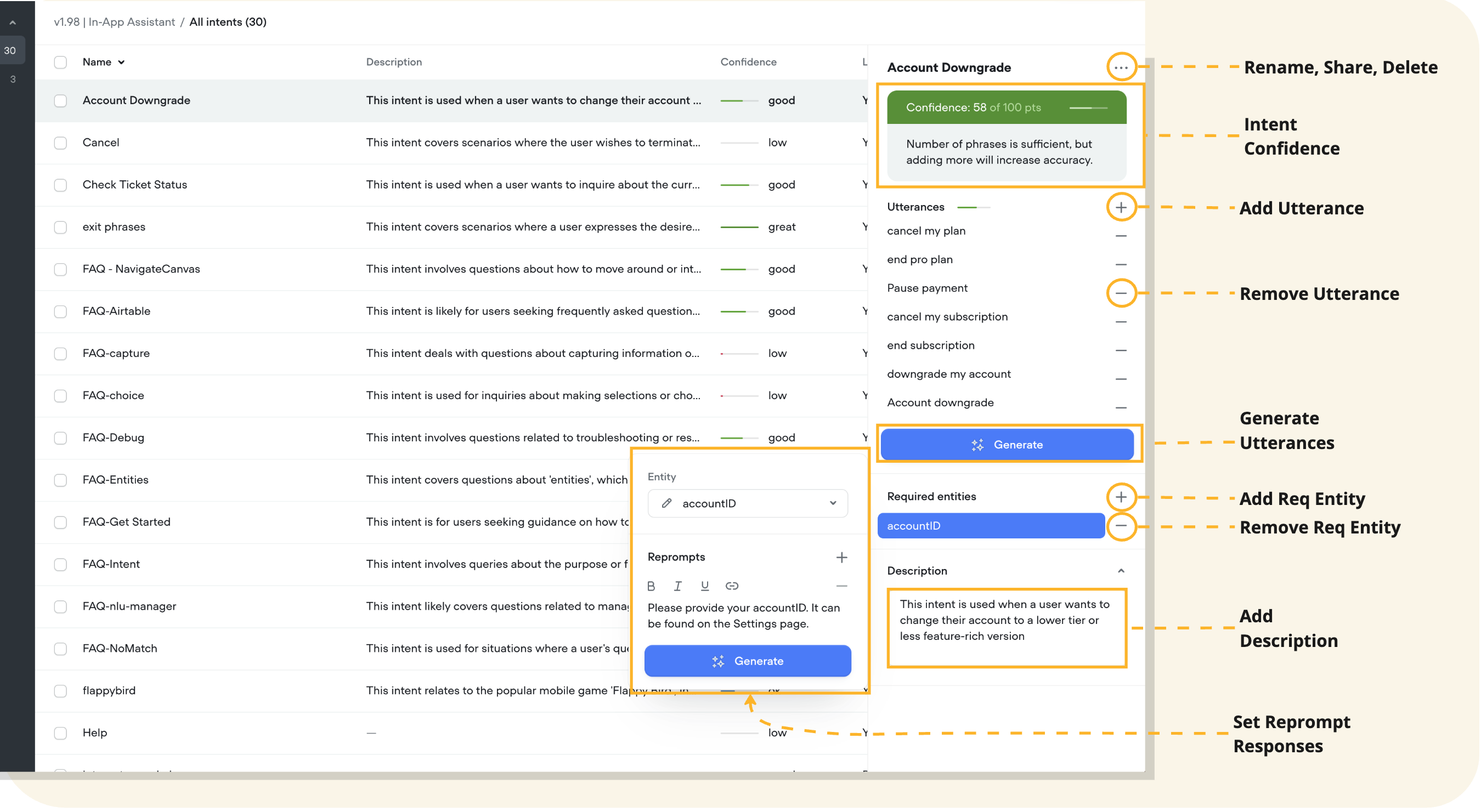Using the Intent CMS

Accessing the Intent CMS
- Open Your Voiceflow Project: Navigate to your project's dashboard.
- Go to the Intent CMS: Click on the "Intents" tab or access it via the project menu.
Creating a New Intent

-
Click on "New Intent": Located in the upper right area of the Intent CMS.
- Note: Intents and entities created in the Intent CMS are available globally within your assistant.
-
Fill in Intent Details:
- Name: Enter a descriptive name (e.g.,
BookAppointment). - Description: Provide a clear explanation starting with "Trigger this intent when..." (e.g., "Trigger this intent when the user wants to schedule a new appointment.").
- Utterances: Add example phrases users might say (e.g., "I need to book an appointment," "Can I schedule a meeting?").
- Name: Enter a descriptive name (e.g.,
-
Add Required Entities (if applicable):
- Click the "+" Icon next to Required Entities.
- Select or Create Entities (e.g.,
Date,Time,ServiceType). - Enter Reprompt Text: Provide messages to prompt the user if the entity is missing (e.g., "What date works best for you?").
-
Save the Intent:
- Click "Create Intent" to add it to your CMS.
Editing an Intent
-
Select the Intent:
- Click on the intent you wish to edit from the intent list.
-
Modify Details:
-
Name: Update the intent name if necessary.
-
Description: Ensure it accurately reflects the intent's purpose.
-
Utterances:
- Add Utterances: Click the "+" icon to add more example phrases.
- Edit or Remove Utterances: Click on an utterance to edit, or use the "-" icon to delete it.
- Generate Utterances: Use the "Generate" feature to have an LLM create additional examples.
-
Required Entities:
- Add or Remove Entities: Click the "+" or "-" icons.
- Edit Reprompt Text: Update the messages for prompting users.
-

Deleting an Intent
-
Single Intent:
- Select the intent you want to delete.
- Click the "..." (more options) button in the editor view.
- Choose "Delete" from the dropdown menu.
- Confirm the deletion when prompted.
-
Bulk Delete:
- Select multiple intents by checking the boxes next to their names.
- Click the "Delete" button in the bulk action toolbar above the table.
- Confirm the bulk deletion to remove all selected intents.
Organizing Intents
-
Sorting: Use the sorting options to organize intents by:
- Alphabetical Order: A-Z or Z-A.
- Confidence Score: High to low or low to high.
- Last Editor: Group intents edited by specific team members.
- Updated Date: Most recent to oldest.
-
Naming Conventions:
- Use consistent naming.
- Make names descriptive and indicative of the user's goal.
-
Descriptions:
- Ensure descriptions are clear and start with "Trigger this intent when...".
- Descriptions are used by LLMs for intent classification.
Tips for Managing Intents
-
Keep Intents Focused:
- Each intent should represent a specific user goal or action.
-
Avoid Overlapping Intents:
- Ensure intents are distinct to prevent confusion during intent recognition.
-
Regularly Update Utterances:
- Incorporate real user inputs and feedback to improve accuracy.
-
Monitor Intent Performance:
- Use analytics to identify intents that may need refinement.
-
Use Representative Utterances:
- Include various phrasings, synonyms, and expressions users might use.
Updated 7 months ago